Some individuals, upon listening to biking and transportation activists speak about new street designs or totally different infrastructure funding priorities, reply with statements like, “however not everybody can bike” or “a few of us want our automobiles.” What’s misplaced in these debates is that even a comparatively small shift in how we get round, Oregonians — and the state of Oregon itself — may see main optimistic impacts.
As a part of their preparation to construct a 2025 transportation funding bundle, the Oregon Legislature is internet hosting conferences to teach lawmakers and listen to enter from consultants (I discussed these workgroups in my earlier put up concerning the finances). In a November twentieth assembly of one in all these workgroups, Miguel Moravec from the Rocky Mountain Institute shared a presentation about how Oregon would profit from a shift in mode alternative.
RMI is a nonprofit suppose tank that began in the course of the oil disaster of the Seventies and now gives analysis and evaluation “to advance the clear vitality transition.” You might need heard about their widely-used induced demand calculator instrument, which is utilized by The Avenue Belief of their candidate coaching program. Moravec introduced a special instrument to the legislative working group: one thing RMI calls their “smarter modes calculator.” Utilizing that calculator throughout a 2024-2050 timeframe, Moravec primarily based his presentation round what would occur if Oregon was in a position to shift simply 20% of its present driving miles to different modes like strolling, biking, or transit.
In keeping with Moravec, if Oregon residents shifted only one out of each 5 auto journeys to a non-driving mode, each family would save $1,457. “This can be a literal stimulus check-sized enhance,” Moravec stated. (Or about $500 bigger than the dimensions of a mean “Oregon kicker” rebate.) RMI’s family financial savings quantity relies on the truth that the typical price to personal and preserve a automotive within the U.S. is about $12,000 per 12 months and the typical Oregon family owns two automobiles.
Different advantages of a 20% car miles traveled (VMT) discount would come with: 488 fewer deaths per 12 months resulting from improved air high quality and extra bodily exercise, and a discount in crashes that may save 67 lives and stop over 1,000 accidents per 12 months. If that’s not sufficient to sweeten the deal, a 20% shift would forestall 25 metric tons of CO2 from being launched into the environment. There’s a price to street crashes too, and RMI’s calculator reveals that Oregon would save $35 billion simply by placing down their automotive keys and reducing street publicity time.
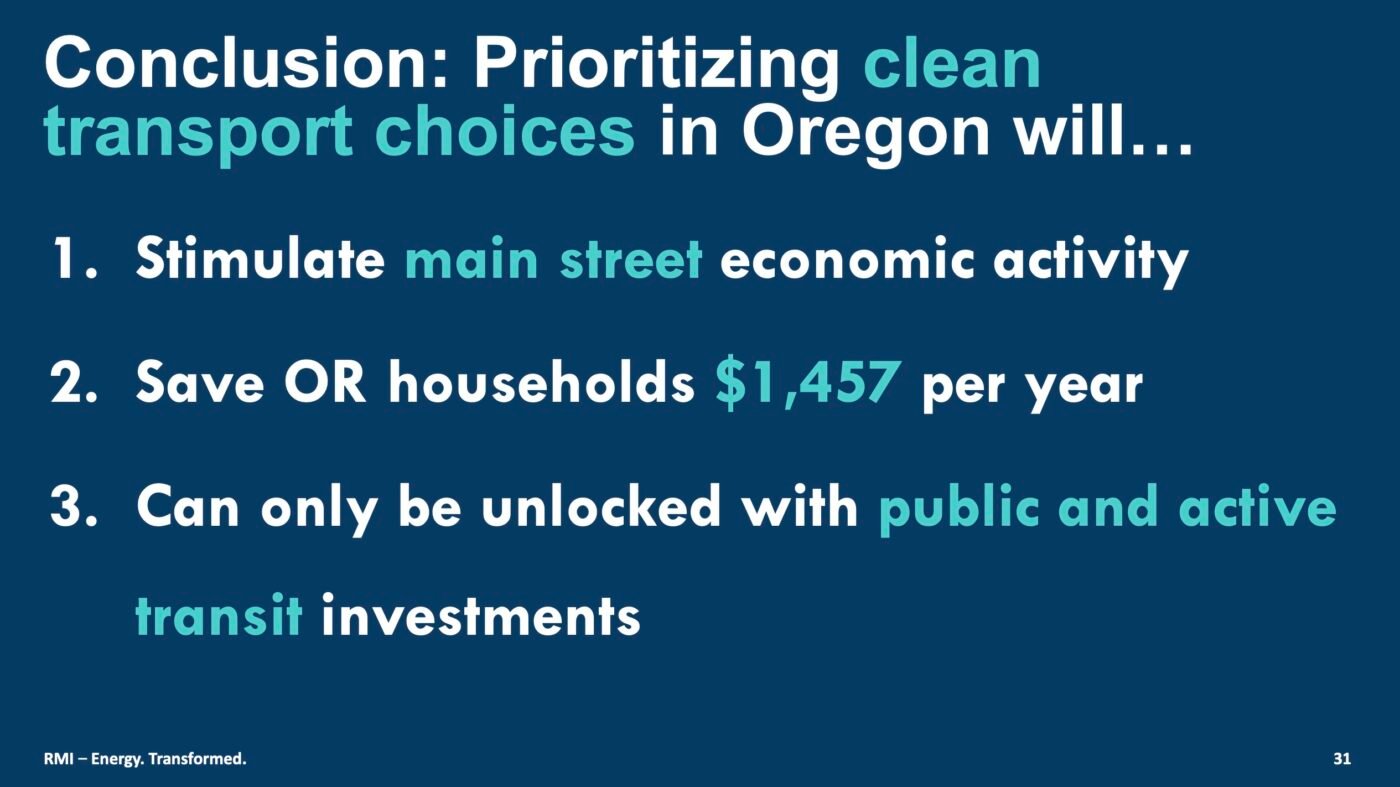
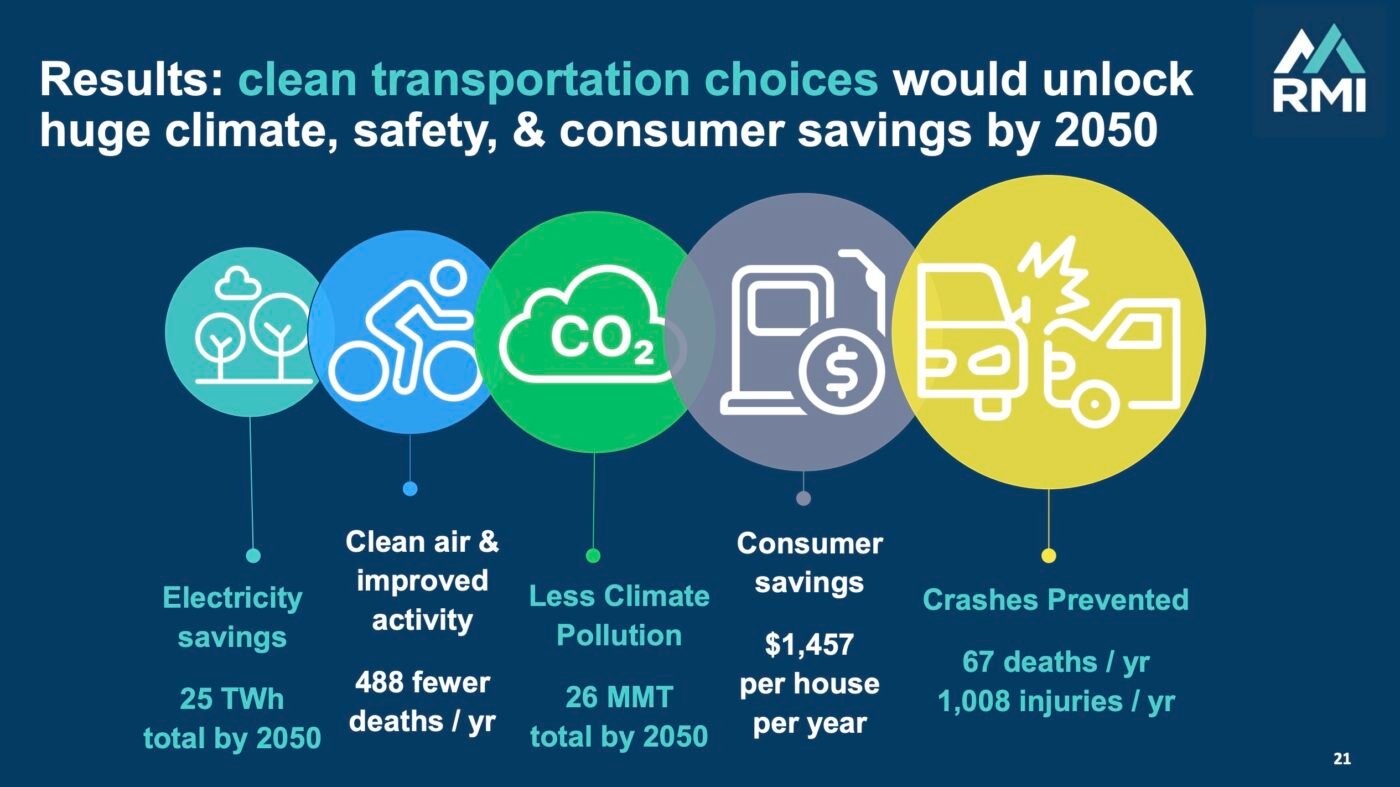
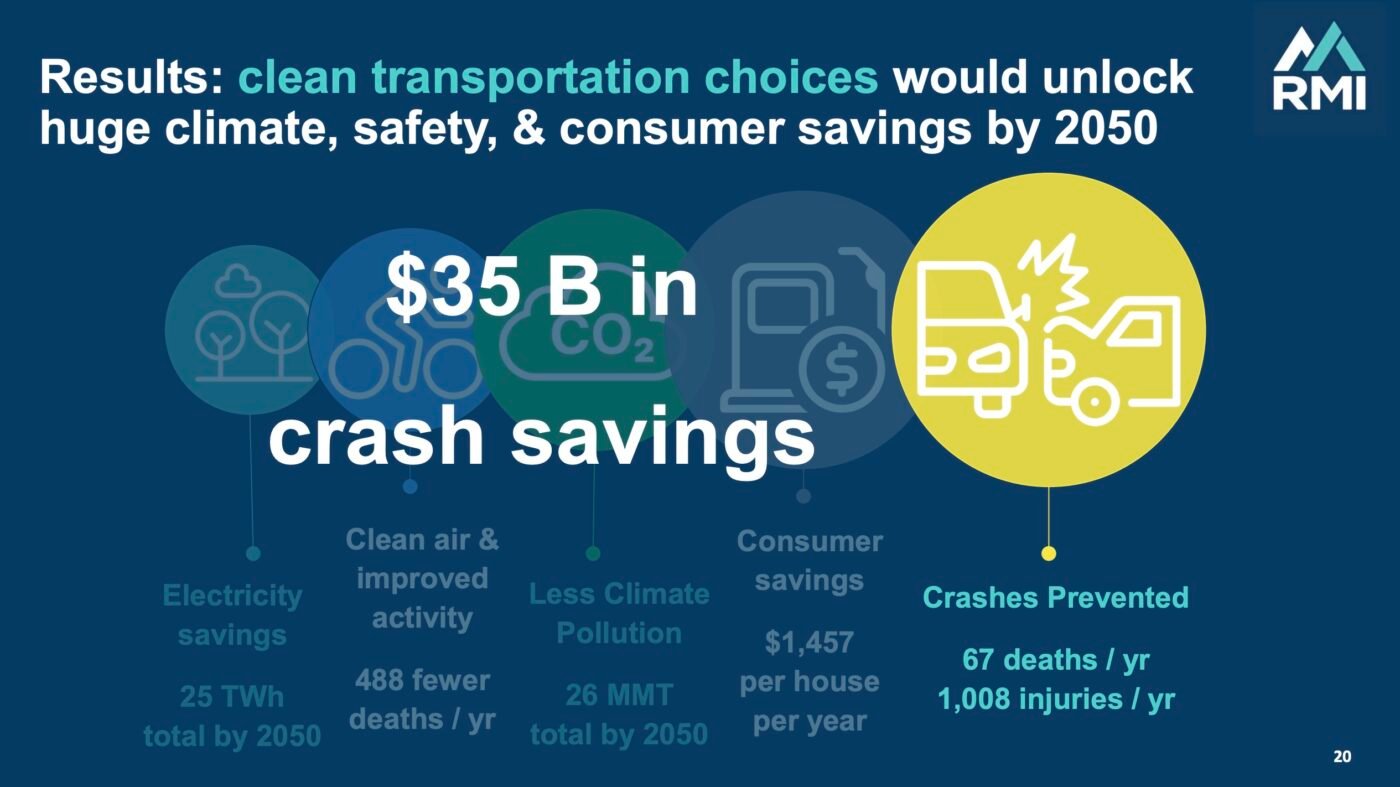
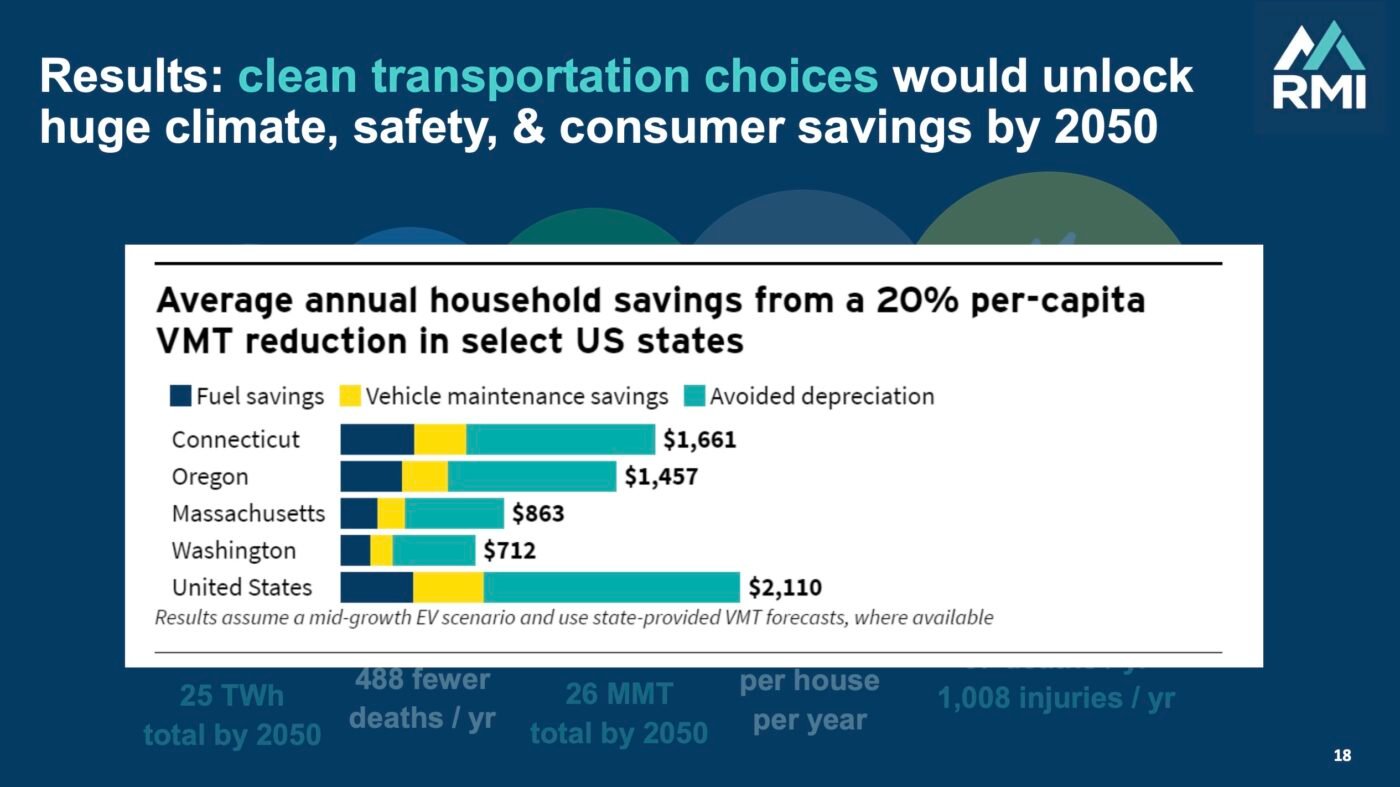
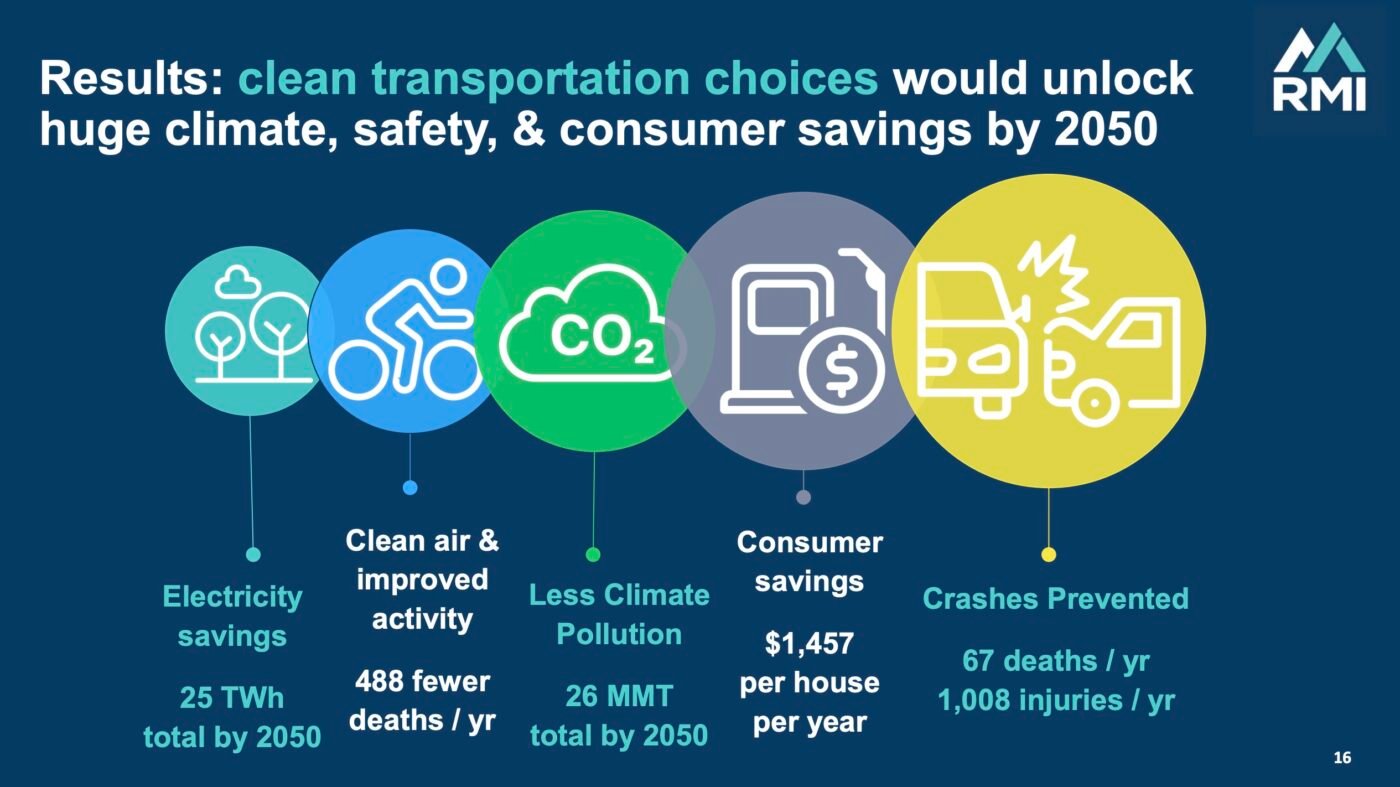
There could be different livability and concrete planning advantages as properly. Moravec used a case research of Arlington, Virginia, to point out how when metropolis planners made non-driving modes extra engaging, additionally they boosted the native economic system. “Clear transportation decisions in Oregon can stimulate Most important Avenue financial exercise, and it’s a virtuous cycle as a result of as residents’ must drive decreased, the world grew to become extra fascinating to dwell.” Extra human-centric locations create a stronger tax base for native governments, Moravec shared, a profit that’s amplified when fewer automotive journeys result in financial savings on street upkeep prices.
To unlock all these advantages, Moravec stated lawmakers can’t simply hope individuals change behaviors on their very own. The legislature should help and implement legal guidelines and applications that entice fewer automotive journeys. What sort of insurance policies do that? His presentation pointed to congestion pricing in New York Metropolis, in addition to a state payroll tax and on line casino tax. In New Jersey, lawmakers have handed a tax on company incomes to fund transit. Colorado and Minnesota have a charge on house deliveries from the likes of Amazon to fund transportation choices, and Minnesota is anticipated to lift $700 million a 12 months from a mixture of regional gross sales taxes.
Have in mind this presentation was being heard by a really influential and highly effective group of lawmakers, advocacy leaders, and ODOT employees that included: Co-chairs of the Oregon Legislature Joint Committee on Transportation Senator Chris Gorsek and Rep. Susan McLain, Oregon Transportation Fee Chair Julie Brown, and lots of others.
Rep. McLain expressed curiosity within the house supply charge and Rep. Kevin Mannix wished to know extra concerning the funding bundle handed in Minnesota.
This was simply one in all many shows that has been shared with lawmakers in latest weeks and months. I’ve been impressed with the quantity of knowledge and suggestions that’s being processed throughout these workgroup conferences and may’t wait to see what sort of proposals find yourself on the desk as soon as the legislative session begins subsequent month.
































